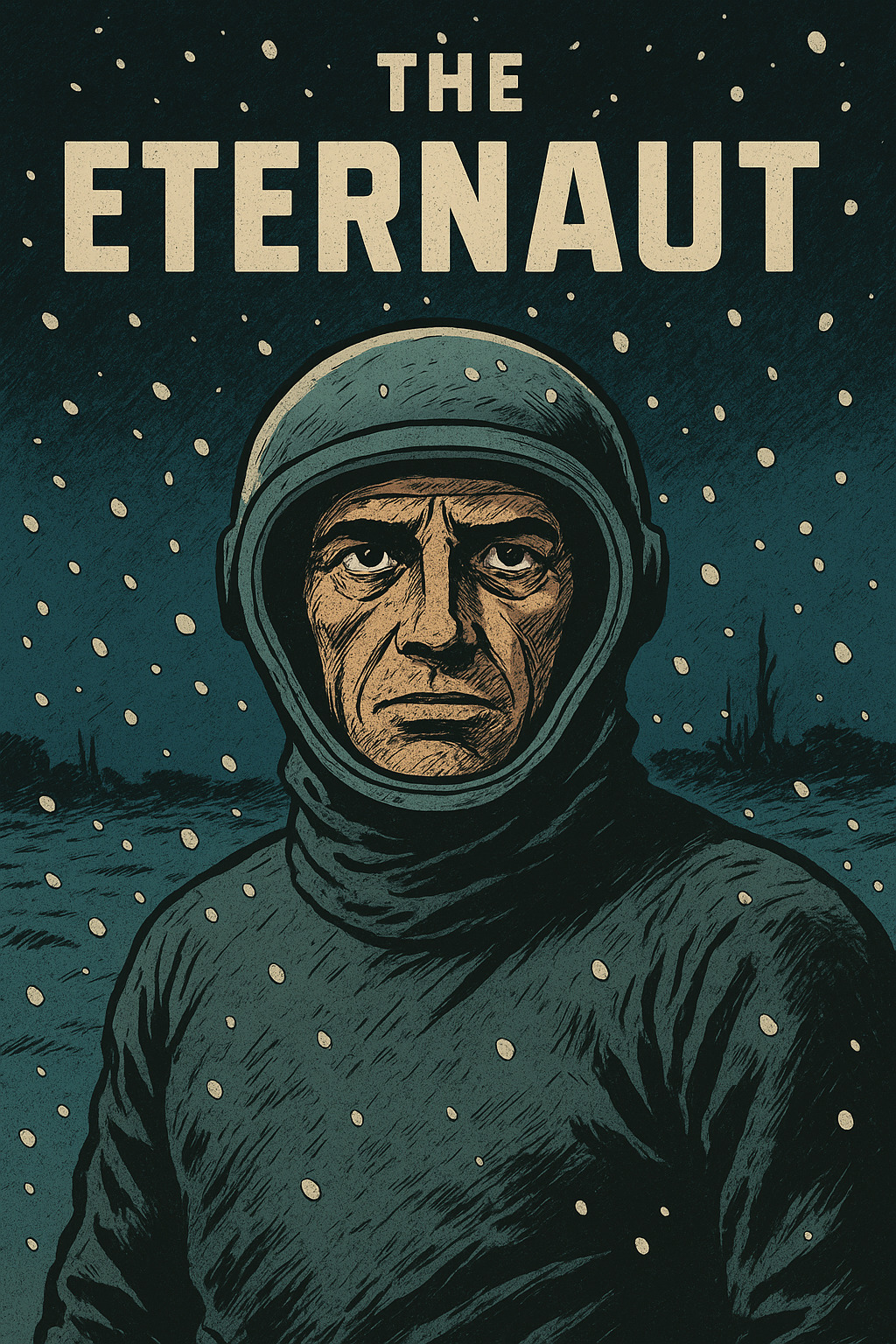One night in Buenos Aires, a man appears in a writer's living room. He says he comes from a future that has already happened. Snow falls, but it's not snow: it's death. Thus begins one of the most powerful stories ever told in the world of comics...
It begins with an eerie silence and a ghostly snowfall. But what falls from the sky over Buenos Aires is not snow: it is a lethal substance that kills everything it touches. In this post-apocalyptic setting, a group of ordinary men band together to resist an alien invasion as invisible as it is devastating.
Chapter 1: The Creators and the Origin
The Eternaut was born in 1957 from the visionary pen of Héctor Germán Oesterheld and the vivid pencils of Francisco Solano López. Published in the magazine "Hora Cero," it is much more than a comic book: it is a cultural document, a muffled scream against oppression disguised as a science fiction story. Oesterheld, a writer and intellectual, started with adventure tales but grew increasingly critical and political.
Chapter 2: The Plot
Juan Salvo, an ordinary man, becomes the Eternaut: a tragic figure, a witness, and a time traveler. After surviving the "deadly snow," he fights alongside other survivors against an enemy that manipulates, deceives, and never fully reveals itself. The aliens are never directly visible: they act through puppets, reflections, and intermediaries. Resistance becomes community, solidarity, and also tragedy. Juan ends up traveling through time, lost in a spiral of memory and sorrow, eternally searching for his family.
Chapter 3: A Comic Against Power
Oesterheld rewrote the story in 1969, making it even more overtly political. The invaders become a metaphor for imperialism, mind control, and creeping dictatorship. Not surprisingly, Oesterheld was kidnapped by the Argentine military junta in 1977 along with his four daughters. He was never seen again. His body, like that of many desaparecidos, vanished into the darkness of the regime. But his message lives on: resistance as a moral obligation.
Chapter 4: Symbols and Visions
The snow that kills is fear infiltrating everyday life. The silence of empty streets is the silence of censorship. The protective suit is the barrier between the self and the world. Juan Salvo is a collective, not solitary, hero: he represents the ordinary person, the people organizing themselves. The time travel is also a journey into memory: every reader becomes a witness, called to remember.
Chapter 5: The Legacy
In Argentina, The Eternaut is an icon: murals, demonstrations, references in political speeches. It has been translated into many languages, read worldwide, and today it echoes with unsettling power: the snow that kills recalls the pandemic, the invisible invaders resemble algorithms and corporations. But there is still hope: the real hero is the group, said Oesterheld. Salvation, even today, lies in shared memory, solidarity, and collective awareness.
We Are the Eternauts
Every time we read The Eternaut, we become part of that snow, of that resistance. It is a story that never ends because it speaks of things that still happen. In the time of post-truth, invisible wars, and erased memories, The Eternaut reminds us that to remember is to resist.
"The true hero is not the individual: it is the group." – H.G. Oesterheld








Leave a Comment